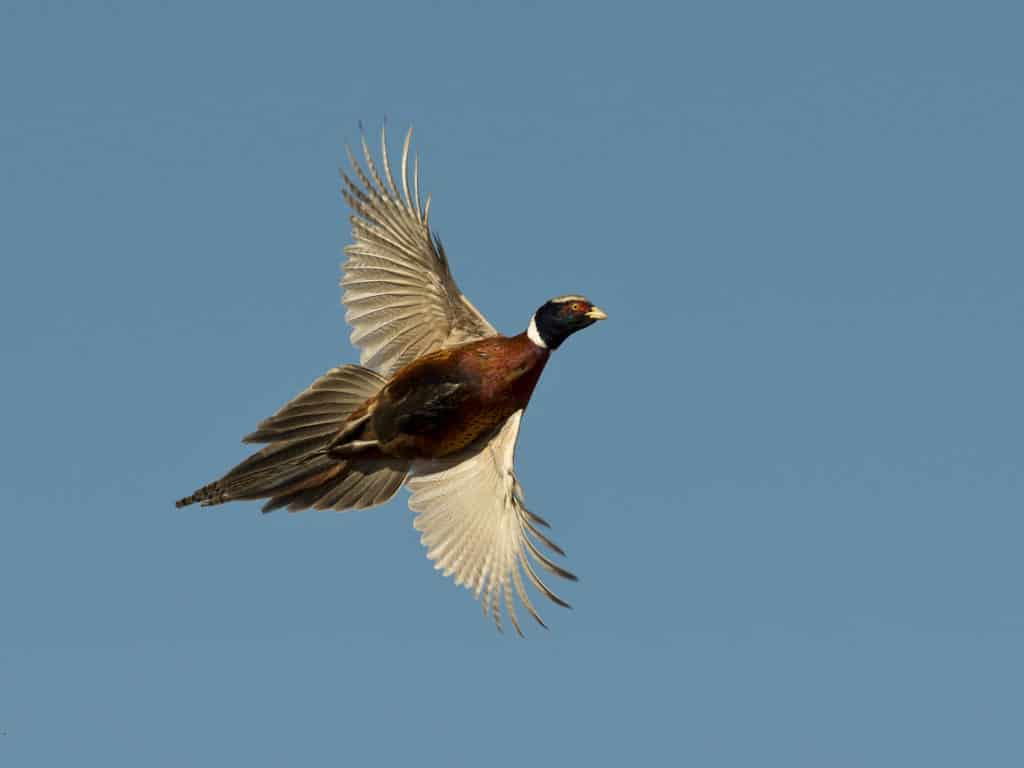Sporting Life

Dakota Roosters and Wounded Vets
By Dennis Doyle
It was another beautiful fall morning in the heart of the American Midwest. The sun was bright, the skies clear, the mercury at 15 degrees with 40 mph winds blowing the previous day’s 18-inch snowfall into three- and four-foot drifts. Altogether a perfect opportunity for hunting wild ringneck pheasants.
There were six of us spread out and being urged along by our mutual friend and hunt ramrod, Tom Schnieder. We were following our three springer spaniels, pushing an unusual stretch of ground behind a friend’s farm. The usually flat landscape of South Dakota was broken around the farm by short, steep hills and checkered with growths of heavy brush, now mostly buried by the snow.
It’s not the usual terrain and I wondered why any pheasants would have sought out this area since the thick wide corn and soybean fields were their customary haunts this time of year. A gust of wind threatened my blaze orange hat and hinted that they were probably seeking shelter from the frigid winds.
There was another reason why this hunt would prove to be particularly memorable.
We had two special guests with us that year. Our ex-Marine, Tom, had invited some Army vets that served in Afghanistan and are a part of the Wounded Warriors Program to join us. However, with the brutal weather, the tough walking, and unusually spooked pheasants, I wasn’t exactly sure we were doing them any favors.
The soldier hunting next to me, a young officer, had been wounded during his first command about two years prior from a large IED detonation. It had flipped and destroyed his Humvee and gave him a severe concussion along with some physical damage. He and his buddy never flagged as we hunted down one draw after another, taking a few shots at fleeing birds that were virtually supersonic as soon as they caught the gusting winds. Then on the last drive, we outflanked a group of birds that had tried to hunker down and let us pass, a big mistake when you’ve got experienced dogs. Big roosters began flushing in panic, close, all around us in explosions of wings and bright feathers.
Gunfire erupted from our group and the birds finally began to fall. I helped the eager vet next to me put at least one downed cock-bird into his game pocket. Since everyone’s fingers were mostly numb, that was a challenging task. He blurted out how great a time he was having and how he was planning on doing the hunt again and soon. That was reassuring to hear as at that moment with the wind, snow, and wild explosions of gunfire, I wasn’t sure we were providing the best environment for battle wound rehab.
Later, as we eventually packed into our 4×4 crew cab pickup and started the return to our hotel for a warm shower, fresh clothes, and dinner he confided a little more, “Last night I dreamed about shooting pheasants—all night long. It was the very first time since I got hurt that I didn’t have endless nightmares. You don’t know how great that is.” We were all a lucky bunch.
Fishfinder:
The rockfish bite in the Bay is at the autumn peak. Jigging is excellent in the mainstem on schools of medium-sized fish to 24 inches, feeding on clusters of baitfish under birds but often just cruising along. Larger fish can be found farther north toward the Patapsco but as a rule, they’re just anywhere you find them. Trolling is also producing as is fishing cut bait at the tributary mouths but this is the endgame for the year. The weather is going to get even harder. Recreational crabbing is in its last days, though DNR extended the season another day for females to the commercial fishery.
